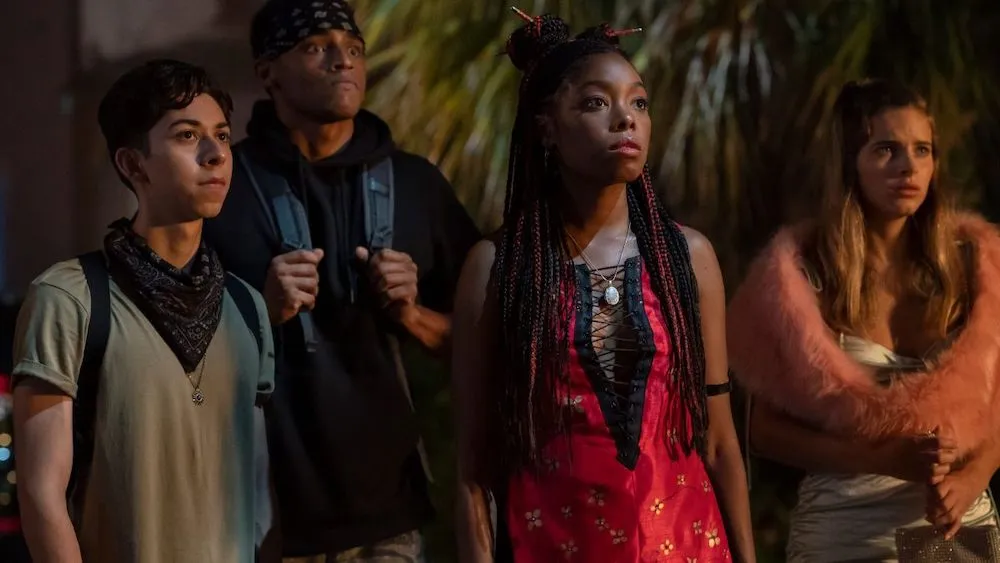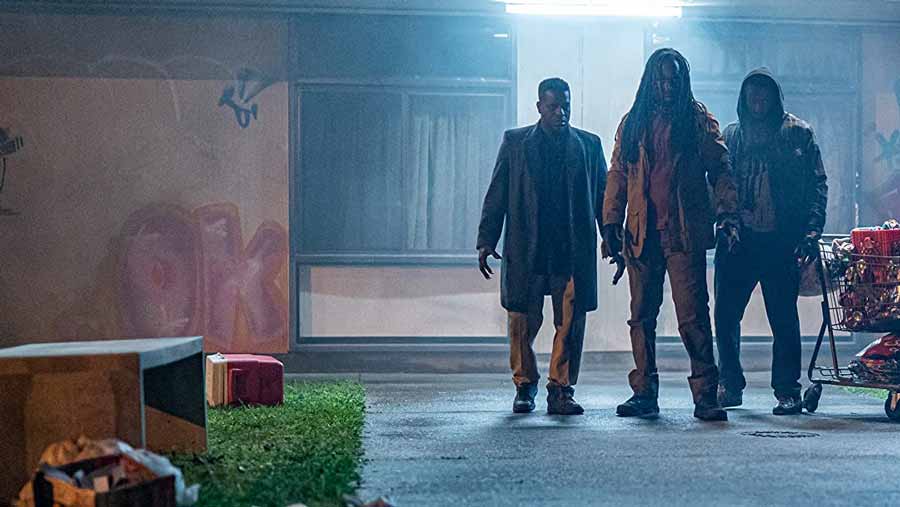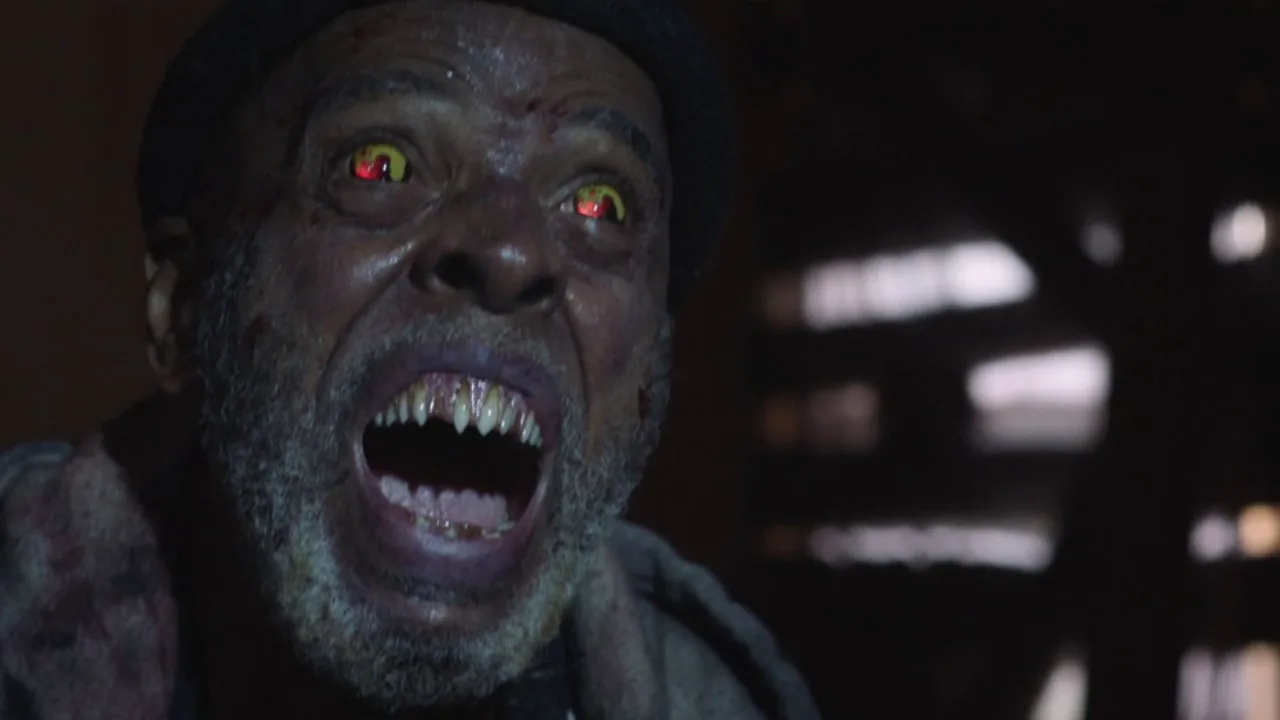Modern Hit Songs from Film Soundtracks
Great films not only give us great stories, but also great soundtracks. Here are some of our favorite picks for soundtracks songs.
Classic horror film criticism centers around the horror film as a cinematic treatise on the “monstrous Other’. The “monstrous Other” can be defined as “repulsive” or an “undesirable” aspect of society brought to bear in physical form. This “monstrous Other” can also be a dog whistle: some marginalized group can be coded within the characteristics of the monster, and in the monster’s destruction is the symbolic destruction of the “Othered” group. Unfortunately, in horror film history the “monstrous Other” was often a marginalized identity. As often intentionally filmmakers associated the identities of society’s most vulnerable (BIPOC, people with disabilities, LGBTQ+ folks, immigrants, the working poor, unhoused peoples, and women to name a few) with monstrosity and horror. Sleepaway Camp (1983) is an infamous example where the protagonist Angela Baker has an association between her murderous rampage and forced transgender identity. Freaks (1932) is another infamous example where circus troupe performers of various physical and mental disabilities are exploited for personal gain and go on a murderous rampage in a dark stormy setting. Their disabilities are seemingly more emphasized than their murderous intent with deliberate angle choices that frame their disabilities in obscene ways.
The examples are numerous.
However, in modern horror, filmmakers are taking a counter approach: by using monstrosity to explore the vulnerable identities that get placed as “Othered”. Black as Night (2021) signals to the observant viewer that this is its intention. At first glance, Black as Night is a strange title choice for a film about vampirism in post-Katrina New Orleans. However, the title alludes to several anti-black and colorist messages, such as the omnipresent association of darkness and blackness with sin and evil. The film reframes the romanticization of vampires by giving the main antagonist a worthy motivation with a complicated plan of action. The film also delves into classism and the poor treatment of the mostly Black Hurricane Katrina survivors. Speaking to anti-blackness, colorism, misogynoir, and the mistreatment of the poor is a grand ambition for any film let alone a vampire horror. Writer Sherman Payne and director Maritte Lee Go make up for the film’s shortcomings with brave hearts and big ambition.

Black as Night follows Shawna, a Black teen who is dealing with self-esteem issues because of the omnipresent colorism she is faced with including from her own brother and crush. This would be relatable to so many dark skin Black women femmes and Black gay men. The movie does an impressive job of revealing the awful things people say about dark skin and their perception of its inherent unattractiveness in callously casual ways. All the “it” cheerleader girls are creole (another way of saying mixed and light skin in colorist slang) and remind Shawna that she doesn’t make the skin tone cut. Her brother teases that her super popular crush only likes creole girls and that Shawna is “Wesley Snipes dark”. This is done at the dinner table where Shawna’s Dad completely dismisses the mental impact of colorism by telling her brother to stop only because “he’s going to give the girl [Shawna] a complex.” Pretending that colorism is only in people’s heads and they need to self-esteem their way out of it is an unfortunate characteristic of Black and brown families.
Shawna grows more confident as she grows into her vampire slaying. She also begins to confront the colorism surrounding her, leading to the rest of her companions acknowledging the issue in a more profound way by the finale. Chris (the popular guy crush) admits that light skin Black men sometimes struggle with not feeling “Black enough” based on comments from mostly dark skin Black men but that he does mostly benefit from his complexion and features. He and Shawna develop a relationship, with him breaking internal Black stereotypes by protecting Shawna and telling her that he always thought she was beautiful (despite irritatingly never saying so in all their encounters).
The exploration of anti-blackness is not “perfect” in the sense that there were times I wished a more nuanced conversation or response to statements was utilized. However, that’s what makes it feel real, as I’ve often been in situations where colorist things are being said and it’s socially awkward to address them without being villainized for not letting people have a “preference” for folks’ skin tone.

Like all films starring teenage protagonists taking on supernatural foes that the adults seem oblivious to, Black As Night takes a willing suspension of disbelief to appreciate in any capacity. There are the usual suspects/tropes in film. There is waif-fu, because how else will our slender-framed female protagonist with no discernible superpowers and training take down the vampires with superhuman strength? We have clueless adults who not only seem unfazed by strange vampiric deaths in their town, but also show no concern for the safety of minors defying the movie’s established curfew because of said deaths. But, the savvy moviegoer knows that this is just to get our band of misfits to the final confrontation with the Vampire gang. The vampires themselves are mostly standard fare: garlic-hating, deathly allergic to sunlight, and pieces of wood piercing their hearts. The vampires are mostly feeding on the homeless and/or drug-addicted populations near the poorer section of town. The area is implied to be devastated after Hurricane Katrina and underinvested in its recovery attempts while white neighborhoods are recovering at record rates. Naturally, the poorest Black folks get stuck here and are the main source of feeding for the vampires. This commentary on systemic injustice placing the most vulnerable in overt danger is deliberately complicated by all the vampires being unambiguously Black and deliberating choosing to feed on the poor Black population trapped in their feeding grounds. This makes the head vampire’s mission interesting within this context.

Babineaux, the head vampire played by the iconic Keith David, is a centuries-old vampire who witnessed the horrors of chattel slavery, Jim Crow discrimination, and the aftermath of Hurricane Katrina (to only name a few low points). He has decided that it is time for the people of African descent to rise against these historic injustices. The two groups naturally clash as our group points out the cannibalization of the disenfranchised and the vampires defend their actions with the “some sacrifices have to be made for the righteous fight” villain trope. The interesting turn comes in when Babineaux opines about how most modern Black folks are lost in anti-Blackness anyway and don’t deserve the same consideration as their ancestors-turned-vampires. It’s a flipped Better Blacks speech where instead of anti-black prioritizing of lighter skin Eurocentric features and “good” hair textures, he prioritizes unambiguously Black phenotypes. The conversation gets muddied when one thinks about how often the biggest victims of anti-blackness—dark-skin, unambiguous Black folks (especially women)—are always shamed for collectively deciding to uphold/gatekeep their own image as Blackness. This comes from a well-meaning, but misguided application of “fairness” over equity. Despite this, I will continue to praise this film for trying to tackle such a huge topic with nuance. The use of vampirism to build an army to strike back at white supremacy is an interesting idea explored thematically in the movie. Whether intentional or not, the zoomed-in focus on the destruction of the disenfranchised BIPOC within this larger goal is a massive commentary on similar criticisms to activist movements in real life that typically exclude or don’t consider BIPOC folks and women. This is spoken to directly when one of the Vampire leaders tells Shawna that he doesn’t like his girls as dark as her but she makes up for it in youth. This cringe line sounds just as bad in the movie as it reads from guys who claim to have a pro-Black mission. The movie shows the complexities of issues like anti-blackness, where even the people purporting to be fighting against it have a hand in weaponizing it against others.
All in all, Black as Night has Amazon Studios taking a step in the right direction by making a film that attempts social commentary and horror. The film does not work quite well as a straight-up horror film, but if you like horror comedy it could be a solid watch. Think Buffy the Vampire Slayer meets Issa Rae’s Insecure and/or Awkward Adventures of a Black Girl and you’ve got this movie. It’s a film exploring how sometimes the oppressed can also oppress others, but that we are always the key to our freedom.
Related lists created by the same author
Great films not only give us great stories, but also great soundtracks. Here are some of our favorite picks for soundtracks songs.
Related diversity category
In an all-black community in Louisiana, a young girl learns her father has committed infidelity and turns to hoodoo to seek justice.
Related movie/TV/List/Topic
Tran Quoc Bao succeeds in telling us a story about martial arts, human decay, and friendship. The originality shown by his filmmaking is admirable and brings fresh air to the classic Chinese martial arts genre.